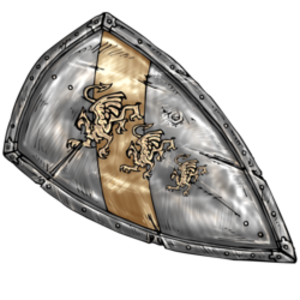The Neuronal Shield
Sometimes Nature does our experiments for us, and nobody – especially any animals – need to get hurt at all.
Diabetes mellitus is one example, in which heart disease, arteriosclerosis and stroke are many times more common than they are in the general population, and give us a perfect place to start looking at some of the causes of arterial diseases in general.
Another, and far more rare, example is a group of brain diseases called lissencephaly, in which whole layers of the cerebral cortex fail to find their homes and develop. The result is a brain that has a fairly smooth surface, rather than being covered in the complex hills and valleys (“gyri” and “sulci”) that cover the surface of the healthy brain. People with lissencephaly usually have quite severe mental retardation, motor problems, muscle spasms and seizures. What normally happens during embryonic development is that the six main layers of the cerebral cortex are generated by neuronal progenitor cells that migrate long distances before they finally find their correct place and settle down. At the beginning of brain development the cells look like an unruly mob trying to find their seats at a concert. Eventually they find their spot, settle down and get to work. The precise spatial organization of these layers of cells is essential to normal cortical functions.
Though lissencephaly is rare, there are other disorders, including some forms of epilepsy and some types of schizophrenia that also result from abnormal migration of nerve cells during the development of the brain.
Researchers from the Mouse Biology Unit of the European Molecular Biology Laboratory (EMBL) in Italy have now discovered that a protein called n-cofilin, that helps organizing the cells’ skeleton is crucial for preventing such defects. In the current issue of Genes & Development they report that mice lacking n-coffin show many of the classic signs and symptoms of lissencephaly.
The skeleton of a cell consists of constantly growing and shrinking filaments that function like strings and struts to give the cell shape and stability, and it is largely responsible for the migration of neurons in the developing brain. N-cofilin interacts with actin – one kind of skeletal filaments – and helps to disassemble them into their individual building blocks. Interfering with this filament remodeling impairs the cell’s ability to move and that blocks migration of neurons during cortical development.
N-cofilin also controls the fate of neural stem cells that are involved in development of the cortex. If it is absent, stem cells stop moving and re-new themselves instead of differentiating. This imbalance depletes the pool of neuronal progenitors cells so that fewer cells can be made to build a complete and functional cortex. The study provides the first proof that proteins affecting actin filament dynamics are involved in neuronal migration disorders.
It is remarkable that a single gene can be so important in the development of the brain, and it opens up new fascinating possibilities for treatment.







